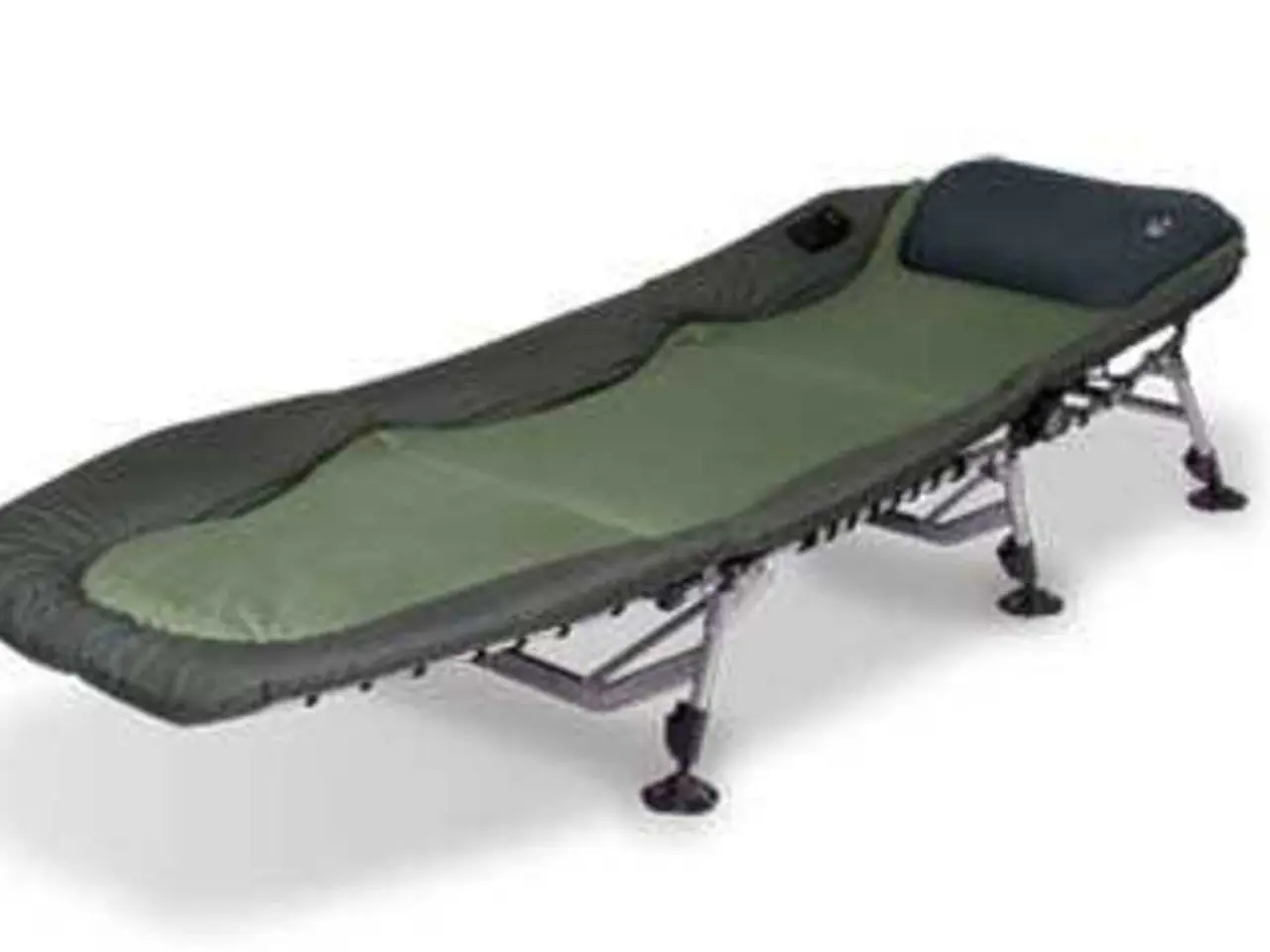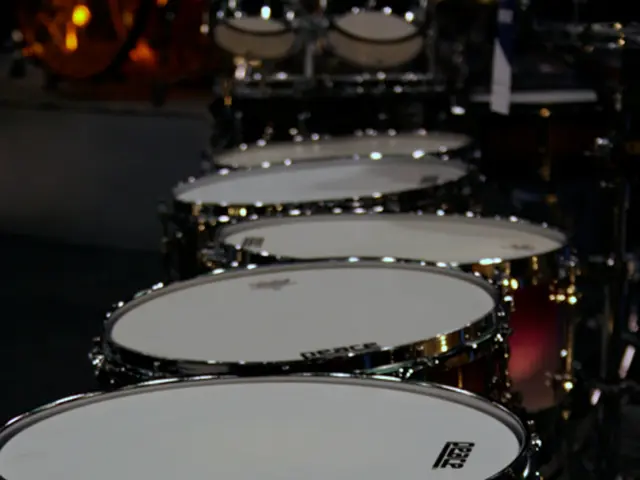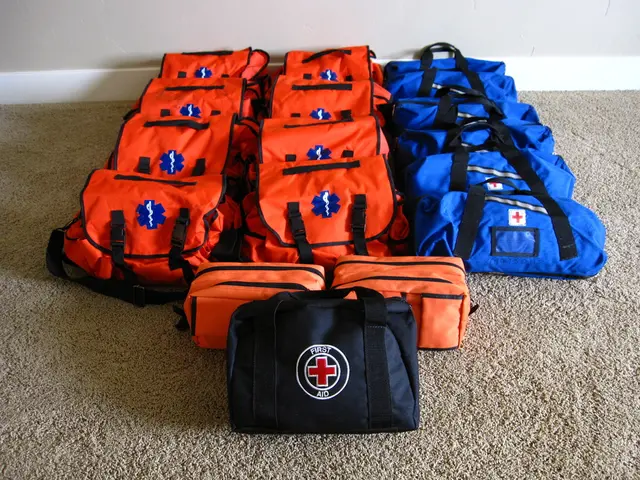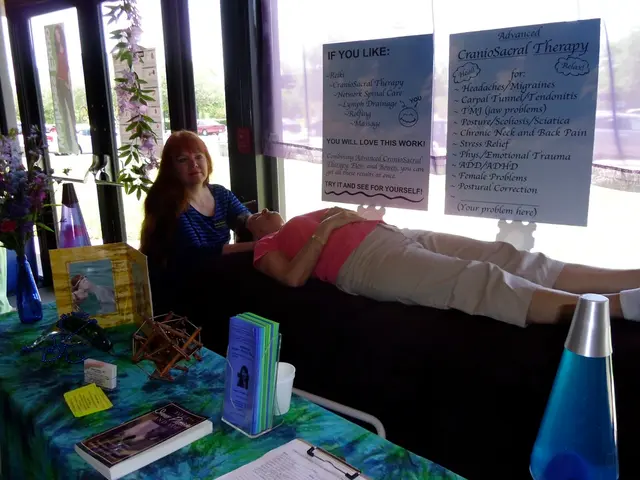Ganglion cyst: Symptoms, origins, and remedies for treatment
Ganglion cysts are fluid-filled lumps that can appear on various parts of the body, including the wrist, hand, ankle, foot, and knee. These cysts, although generally harmless, can cause discomfort and affect mobility.
Treatment for ganglion cysts can vary depending on the size, symptoms, and patient's needs. Both non-surgical and surgical approaches are available.
Non-surgical treatments often involve observation, as many cysts resolve spontaneously without intervention. For those causing discomfort, activity modification, such as avoiding repetitive movements, can help alleviate symptoms. Wrist splinting or bracing, ice application, and over-the-counter anti-inflammatory drugs can also provide relief. In some cases, needle drainage of cyst fluid (aspiration) may be performed, followed by a corticosteroid injection to reduce inflammation and recurrence risk. However, aspiration has a high recurrence rate, up to 50%.
Surgical treatments are recommended for cysts that are painful, recurrent, functionally limiting, or cosmetically concerning. The most common surgical procedure is excision surgery, where the cyst and a portion of the involved joint capsule or tendon sheath are removed to reduce recurrence risk. This procedure is usually done under local or regional anesthesia, often on an outpatient basis. Recurrence after surgery is about 10–15%.
Two surgical techniques are commonly used: open surgery and arthroscopic surgery. Open surgery recovery time is typically 10–20 days, while arthroscopic surgery recovery is faster, about 6–16 days, with less tissue disruption.
After treatment, whether surgical or non-surgical, a period of immobilization is common to allow healing. Physical therapy may be recommended to restore strength and flexibility. Recovery time depends on the procedure extent and cyst size; smaller cysts without stitches may heal in days, while larger surgeries may take weeks to months for full healing.
Individuals are advised to keep the treated area covered and avoid accidentally bumping it during recovery. A doctor may use imaging scans, such as X-ray, ultrasound, or MRI, to determine the cause of a ganglion cyst and rule out other issues.
It is essential to note that traditional remedies, such as hitting a ganglion cyst with a heavy object, are not safe or effective and should be avoided. Similarly, attempting to "pop" a cyst is not advisable, as this can lead to infection and is unlikely to resolve the issue.
In summary, treatment for ganglion cysts is tailored individually, with many cysts requiring no intervention. However, aspiration or surgery offers relief when symptoms persist or worsen. Post-treatment recovery involves a period of immobilization followed by a gradual return to activity.
- Bipolar disease and diabetes are two different medical conditions that require specific treatments.
- The macular area of the eye is a crucial region in the management of various eye diseases.
- Colitis, psoriasis, and psoriatic arthritis are chronic inflammatory diseases affecting the digestive system, skin, and joints, respectively.
- Crohn's disease and ulcerative colitis are types of inflammatory bowel diseases that can cause significant discomfort and impact quality of life.
- COPD (chronic obstructive pulmonary disease) and degeneration of lung tissues are common among smokers and the elderly, necessitating health-and-wellness interventions.
- NSCLC (non-small cell lung cancer) can be predicted early with regular screening and check-ups, increasing the chances of effective treatments.
- Migraines, a type of headache, may co-occur with depression and require mental-health therapies and treatments for optimal management.
- Chronic-kidney-disease patients may benefit from dietary adjustments, frequent medical check-ups, and kidney-friendly nutrition.
- Dry eyes and dry skin are common conditions that can be alleviated with skin-care products and water intake.
- Predictive models developed by science are increasingly used in the workplace-wellness sector to identify chronic diseases early.
- AQ (air quality) is crucial in the management of respiratory diseases such as asthma and hepatitis, affecting overall fitness-and-exercise performance.
- Science plays a significant role in the development of new therapies and treatments for various chronic diseases, including chronic-kidney-disease and mental-health conditions.
- CBD (cannabidiol) is a compound used in alternative medicine, purported to help with various conditions like chronic pain, anxiety, and skin-care issues.
- Working on workplace-wellness and medical-conditions awareness is essential to create a healthier and more productive work environment.
- Regular exercise and a balanced diet are essential aspects of fitness-and-exercise and nutrition for managing chronic diseases like diabetes and arthritis.
- Recognizing and managing mental-health conditions, such as depression, in the workplace is integral to maintaining a positive mental-health climate and overall well-being.




